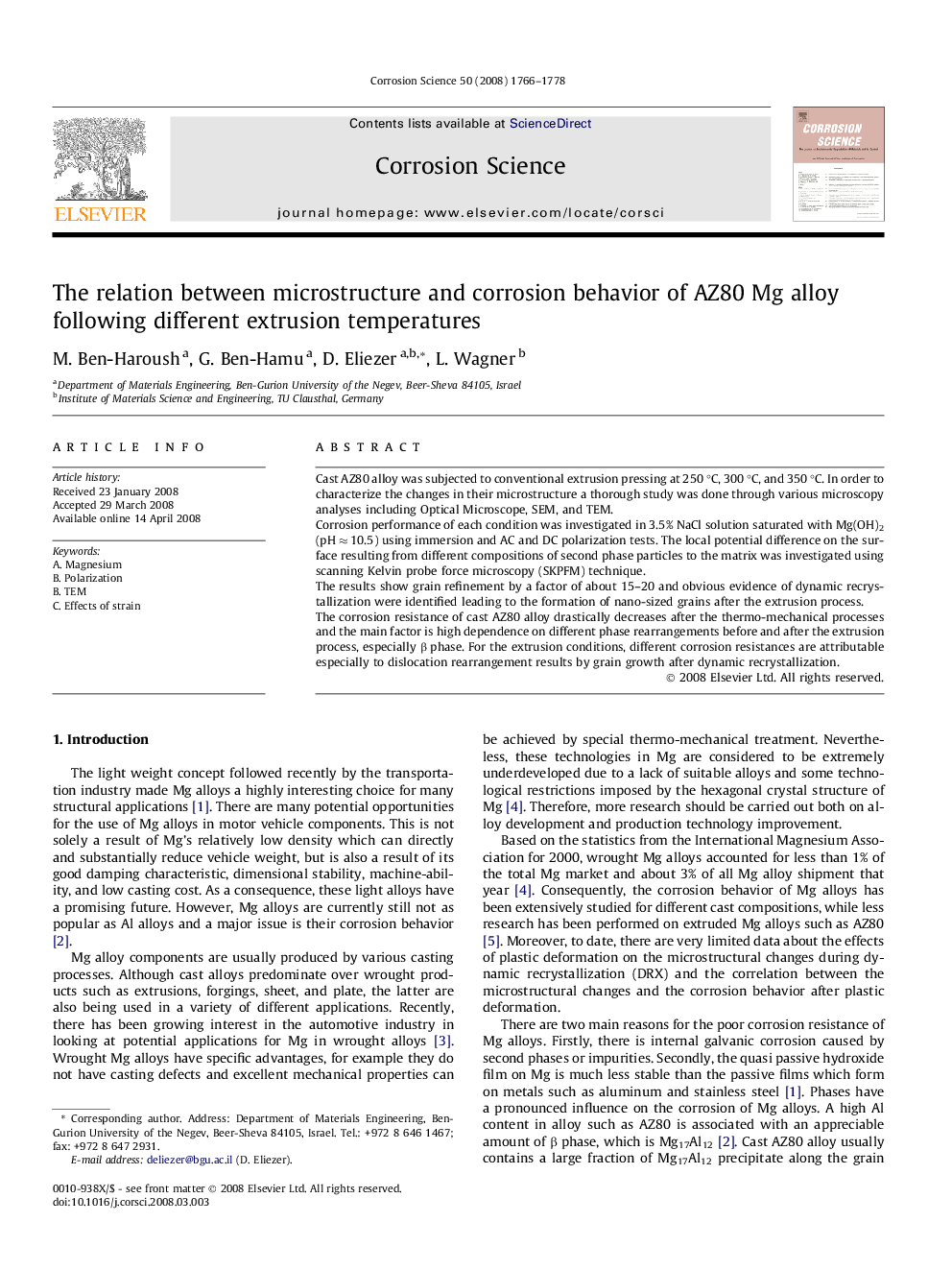| Article ID | Journal | Published Year | Pages | File Type |
|---|---|---|---|---|
| 1471669 | Corrosion Science | 2008 | 13 Pages |
Cast AZ80 alloy was subjected to conventional extrusion pressing at 250 °C, 300 °C, and 350 °C. In order to characterize the changes in their microstructure a thorough study was done through various microscopy analyses including Optical Microscope, SEM, and TEM.Corrosion performance of each condition was investigated in 3.5% NaCl solution saturated with Mg(OH)2 (pH ≈ 10.5) using immersion and AC and DC polarization tests. The local potential difference on the surface resulting from different compositions of second phase particles to the matrix was investigated using scanning Kelvin probe force microscopy (SKPFM) technique.The results show grain refinement by a factor of about 15–20 and obvious evidence of dynamic recrystallization were identified leading to the formation of nano-sized grains after the extrusion process.The corrosion resistance of cast AZ80 alloy drastically decreases after the thermo-mechanical processes and the main factor is high dependence on different phase rearrangements before and after the extrusion process, especially β phase. For the extrusion conditions, different corrosion resistances are attributable especially to dislocation rearrangement results by grain growth after dynamic recrystallization.
